Known as “Land’s End,” Haenam attracts visitors with its beautiful mountain scenery and historic Buddhist temples. Located at the southwestern tip of the Korean peninsula, the area was once a cultural conduit connected to ancient China and Japan, and a rest stop for political exiles.
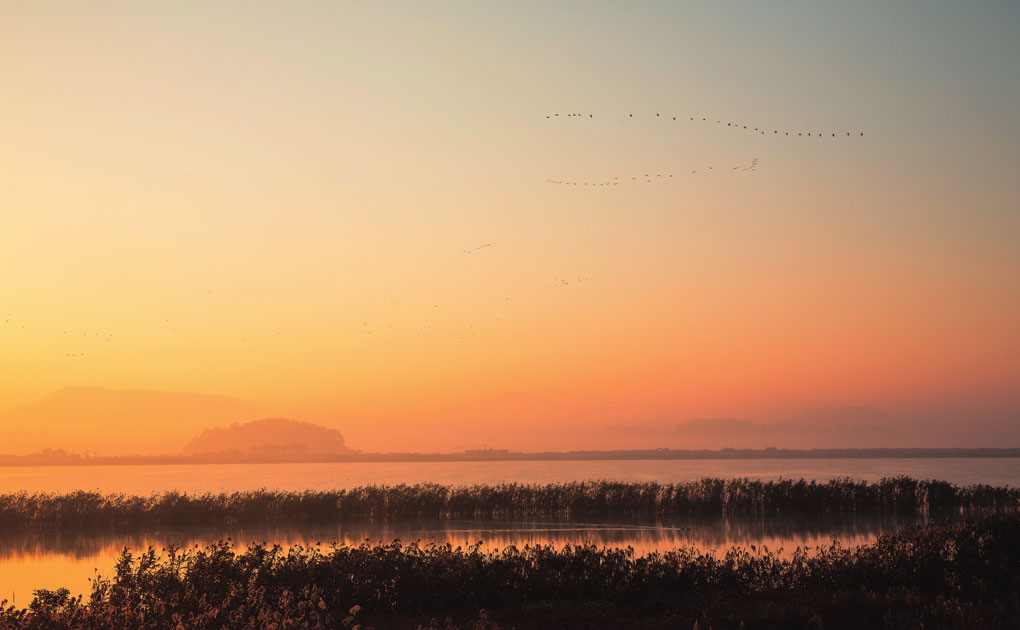
Gocheonam Lake in Haenam is a winter destination for hundreds of thousands of migratory birds. The main fowl is the Baikal teal but a variety of rare birds designated “Natural Monuments” are also spotted here, making the lake a place of lasting interest for birdwatchers.
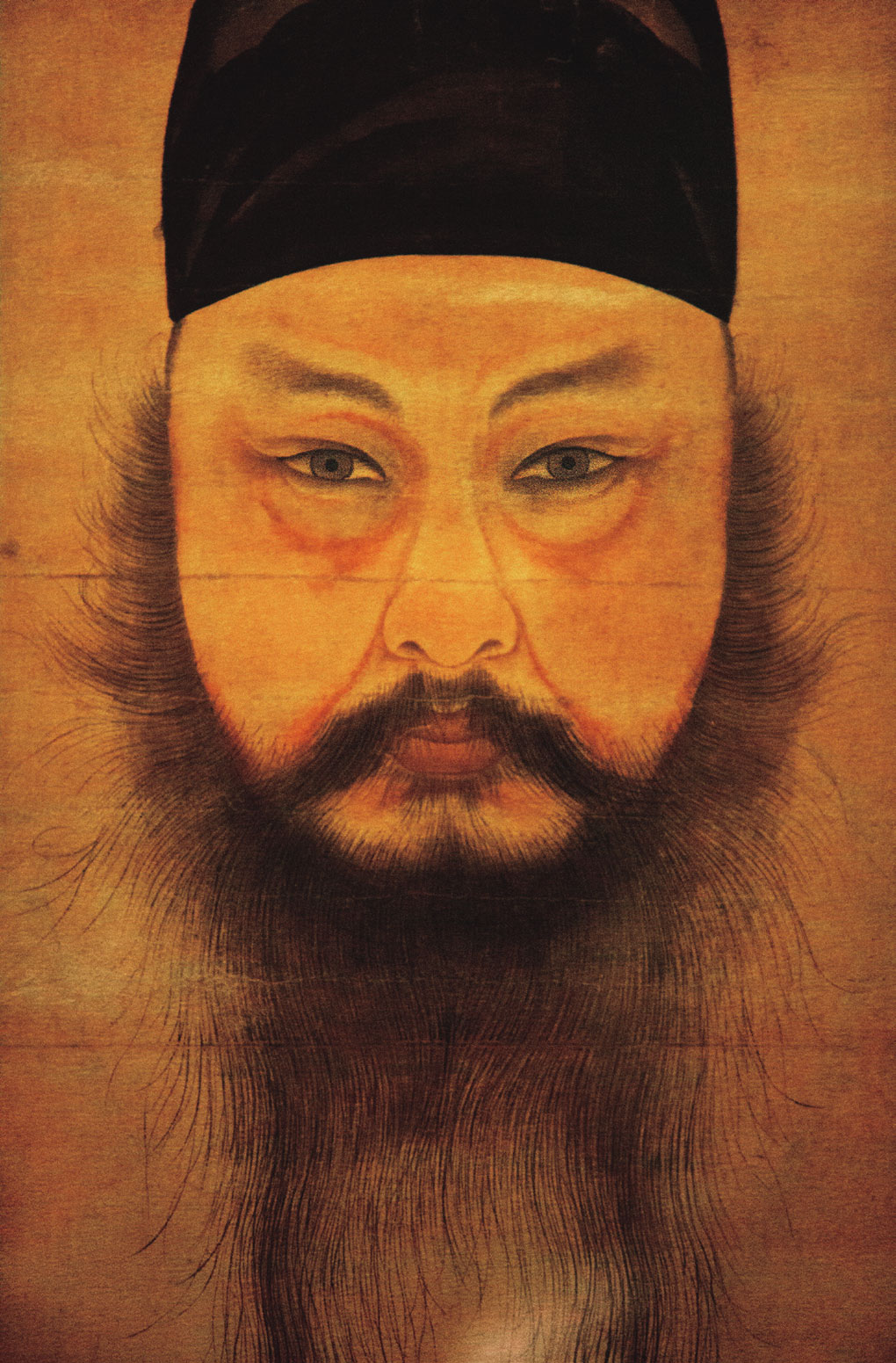
“Self-Portrait” by Yun Du-seo. 1710. Ink and light color on paper. 38.5 × 20.5 cm. This is recognized as one of the greatest self-portraits in Korean art. Yun Du-seo (1668-1715), a painter and man of letters, was the great-grandson of Yun Seon-do, a civil official and poet of the mid-Joseon period, and the maternal great-grandfather of famous thinker and statesman Jeong Yak-yong.
Everyone has a place where they find it difficult to walk with a carefree mind. For me, that place is Haenam.
I lived in Haenam from the spring of 1980 to the autumn of 1982. I had just turned 20 and had already exhausted the gamut of questions, pent-up anger and passions that should have been meted out bit by bit throughout my life. Mentally drained, I joined the army, as if I were running away. After basic training, I was assigned to Haenam County, South Jeolla Province, the most southwestern region of the Korean peninsula, There, in the farthest place from my home, I began sentry duties, watching the coastline, in the middle of winter.
Stone walls turned green with moss and hardy orange wood fences; the damp, briny smell of the fog-covered sea; the dirt paths and brooks stretching through an endless expanse of fields; a couple of goats that cavorted on the hills; the lady who kept shop in front of the base, growing old without knowing how to read her husband’s name on his letters – these were my first impressions of Haenam.
Now, more than 40 years later, I have once again crossed over Useulchi (Cow’s Knees Hill) to reach the town of Haenam, the county seat. My traveling companions and I search for our lodgings. Nothing looks familiar.
If travel or exploration should entail inspection of once glorious sites of cultural heritage, a look back over the past to revel in memories, Haenam would be the last place to visit. It does not possess a glorious past; there is nothing in particular to see. It has largely been known as a place where exiled dissidents stopped to rest before starting years of banishment far from the nation’s capital.
And yet, Yu Hong-june, professor of art history, deemed Haenam worthy of starting the first volume of his “My Exploration of Cultural Heritage” series. He guided readers to enriching aspects of Haenam: Nogudang, the head house of the Haenam Yun clan, located in the inner part of Yeondong Village surrounded by torreya trees; Daeheung Temple, standing quietly in a valley of Mt. Duryun, at the end of a forest road lined with old trees that form a tunnel overhead, blotting out the sky; gracious, old Mihwang Temple sitting on the ridges of Mt. Dalma (or Dharma Mountain); and Sajabong (Lion Peak), where there is an observatory at Land’s End. The scenery, with its sense of quietude and distance, familiarity and elegance, modesty and neatness, so unlike Korea’s other famous tourist destinations, was captivating. But few would know that the serenity of gentle sunlight and wind that casually wraps around the mountains is often preceded by fierce rain and gales that mercilessly rip through the area, making people shiver with fright.
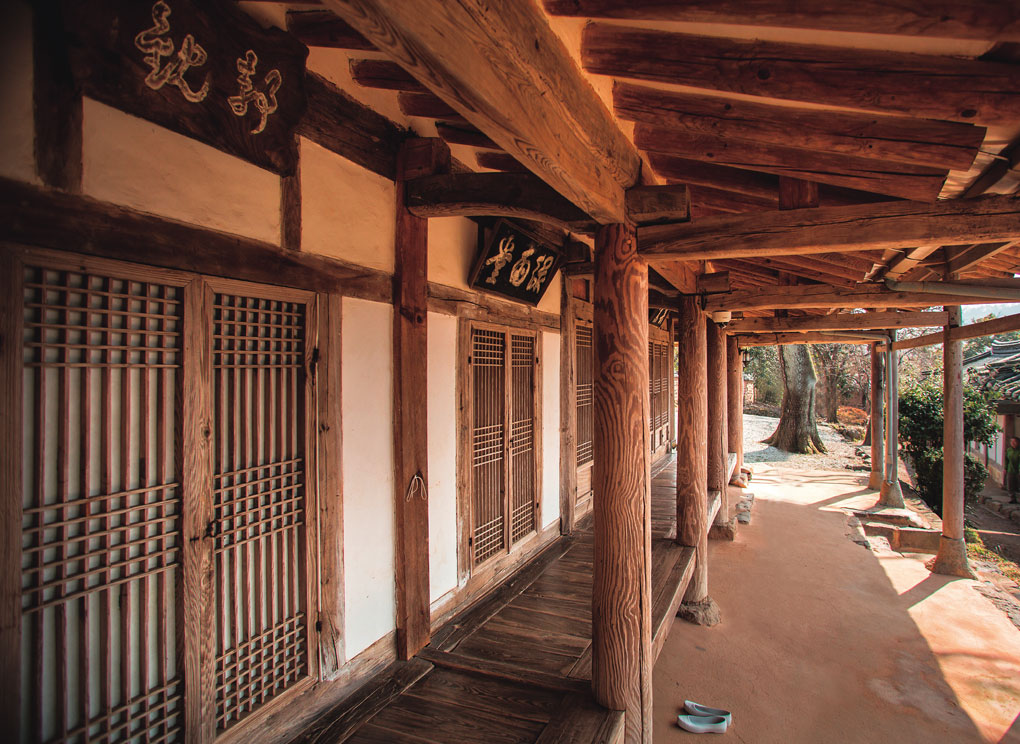
The outer quarters of Nogudang, the head house of the Yun clan from Haenam. Part of a house in Suwon that King Hojong (r. 1649-1659) bestowed on his tutor Yun Seon-do was dismantled and rebuilt here. The nameboard was written by the famous calligrapher Yi Seo (1662-1723), who was a close friend of Yun Du-seo.
Haenam’s name, literally “South of the Sea,” infers that it’s just a step away from land into a new world. Invested in this place is the power to bring mariners and exiles back from adversity.
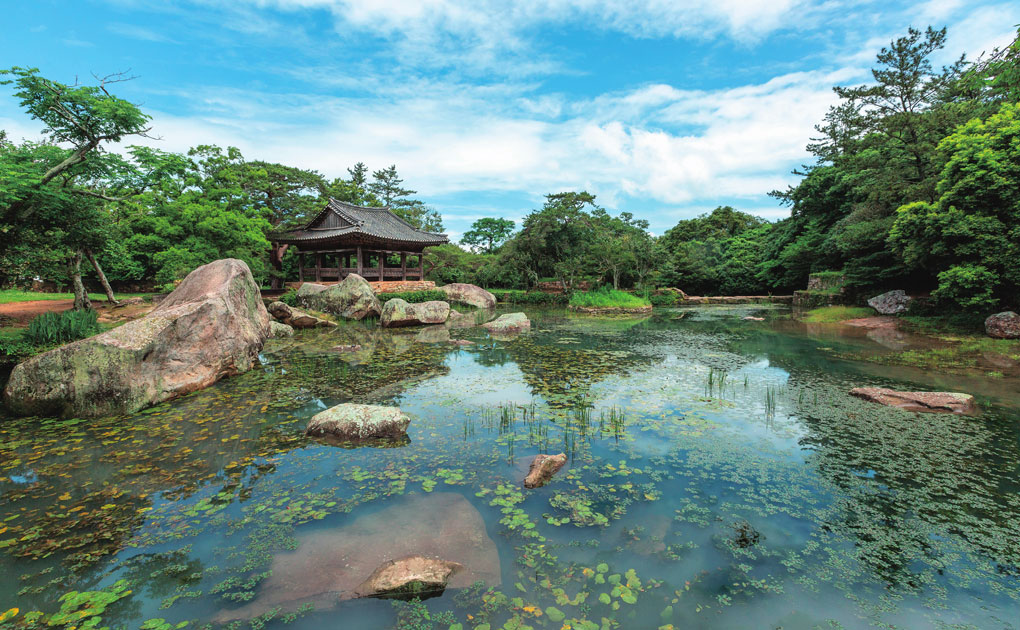
The lotus pond and Seyeon Pavilion of Buyong-dong Garden on Bogil Island. When King Injo (r. 1623-1649) surrendered to invading Qing forces in 1637, Yun Seon-do gave up civil service and created this garden in his hometown. While living reclusively on the island, he wrote his famous poem “The Fisherman’s Calendar.”
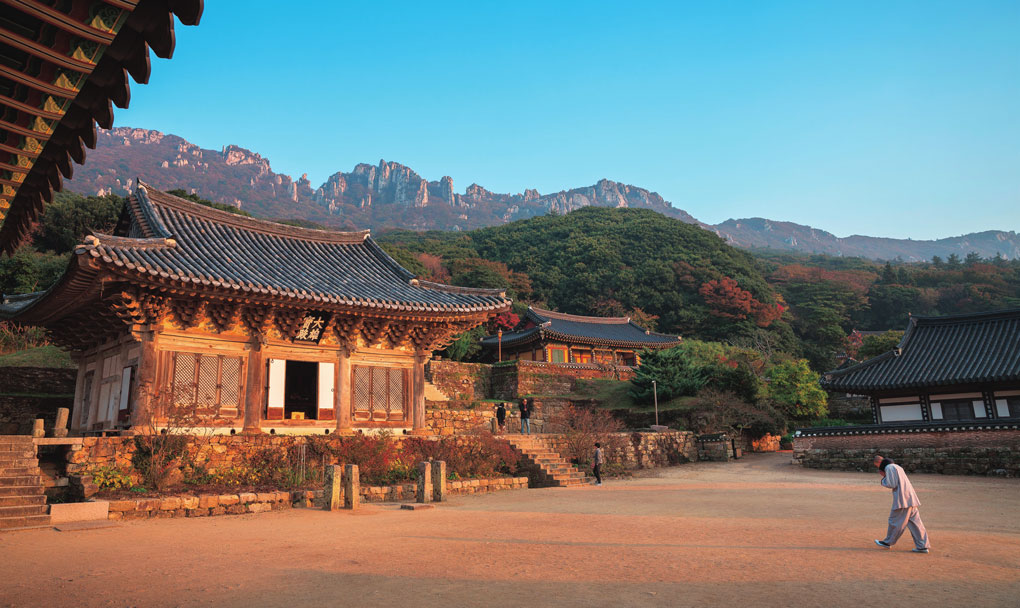
Mihwang Temple, built in 749, is located at the southern end of the Korean peninsula. A record stating that Chinese scholars and officials visited the temple shows that it was known in China as well. On the left is the main hall Daeungbojeon (Treasure Hall of the Great Hero) set against the beautiful peaks of Mt. Dalma.
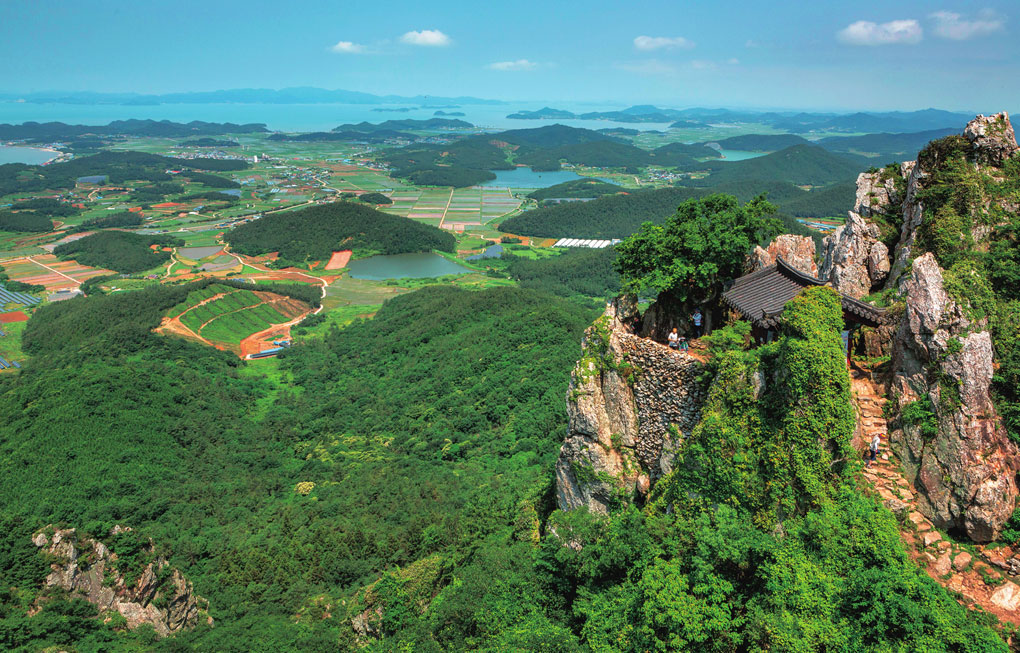
Dosol Hermitage, atop a steep cliff on Mt. Dalma, was neglected for a long time until it was rebuilt in 2002.
Nogudang and Buyong-dong
The day we visited Nogudang, whose name means “House of Green Rain,” it was raining so hard that our convenience store umbrellas were of little use. Our guide was Yun Yeong-jin. The Haenam of his schooldays, more than 50 years ago, had been dust flying over newly made roads and bills posted on all the walls urging the public to report spies. Back then, Haenam’s porous environment made it vulnerable to communist infiltrators. Yun retired as an army colonel and returned to his hometown, finally reading a family treasure, “Jiam’s Diary” (Jiam ilgi). Then he reread it again and again until he had memorized it.
The diary was written by Yun I-hu (1636-1699), a direct ancestor who was a grandson of poet and civil official Yun Seon-do (1587-1671). Yun I-hu was the father of Yun Du-seo (1668-1715), the man who left behind the most renowned self-portrait of the Joseon Dynasty. He was also the maternal grandfather of Jeong Yak-yong (1762-1836), thinker and statesman of the later Joseon period. It was in the house where we now stood that Yun Du-seo was born.
Colonel Yun explained that the pillars of Nogudang were round like those found in royal architecture because the house had been granted to Yun Seon-do by King Hyojong (r. 1649-1659), whom Yun had tutored while he was crown prince. Upon the king’s death and the loss of the royal favor that had protected him, Yun Seon-do was exiled. After seven years in banishment, he dismantled the main building of the house Hyojong had made for him in Suwon and rebuilt it in Haenam. He was 81 years old at the time. There is an exhibition hall built beside Nogudang where the famous self-portrait of Yun Du-seo and the “Comprehensive Map of Joseon” (Joseon jeondo) can be seen. But despite the pouring rain, upon hearing that replicas had been hung for fear that the originals might be stolen, we turned our steps.
The place most clearly marked with the traces of Yun Seon-do’s life would be Buyong-dong on Bogil Island. In the old days, it seems that people arrived on the island by boat from Baekpo, a port village in Haenam. These days, a ferry departs every 30 minutes from Wan Island and from Haenam’s Galduri Wharf. Located in Baekpo is a house that belongs to the Yun clan. A project to reclaim the tidal flats at the bay began in the time of Yun Seon-do’s grandfather. By Yun Du-seo’s era, five generations later, the reclaimed land had become so vast that a farmhouse was built there to manage it. Among the landscapes painted by Yun Du-seo is one titled “Baekpo Villa.”
Foreign tourists who visit the garden of Buyong-dong, meaning “Lotus Cave Village,” will probably marvel at the discerning eye and sensibilities of a Joseon nobleman who fashioned a place of such taste, style, natural beauty and harmony. But Koreans have mixed feelings about the place.
The activities of Yun Seon-do clash with the idea of “honest poverty” and Mencius’ creed of sharing happiness fairly with the people, which are traditionally associated with the life and spirit of Confucian scholars. The fact that he indulged in such a luxurious lifestyle when farmlands were devastated and the people fell into destitution in the aftermath of two major wars, makes it difficult for Koreans to simply admire Yun as a man of lofty character who lived with nature as his friend.
Yun’s famous poem “The Fisherman’s Calendar” (Eobu sasisa), written in the verse form for singing called sijo, is set on Bogil Island. It is a masterpiece of traditional Korean literature highly acclaimed for its vibrant, sophisticated expression and sensitive descriptions. But the fisherman who appears as the narrator of this poetic cycle is a mere part of the scenery that was used to facilitate, as Yun wrote in the preface, “another pleasure, the pleasure of making us sing at the top of our voices and row the oars together.” At the same time, the deep-seated wrath of Yun’s patriotism, which embroiled him in political strife and led him to be exiled three times, cannot be denied. This is why visiting the beautiful garden of Buyong-dong is no walk in the park for me.
With the help of the Haenam Institute of Culture, we were able to hear about the latest developments in the county from Jeon Guk-seong, who retired as director of the regional health center. He brought back to me the gentleness and diligence of the Haenam people, which I had forgotten. Jeon, 70, is now a visiting professor of social welfare studies at a local university. He is proud that his family’s demise in fortunes when he was young forced him to become independent, making him the person he is today.
We were startled to hear from him that Hwawon, the most remote corner of Haenam, had become the nation’s biggest producer of winter cabbages and supplier of pre-salted cabbage for making kimchi, and that land prices had skyrocketed there since it became linked by road to the city of Mokpo. Hwawon’s area of reclaimed arable land is the widest in the country, enabling its agricultural output. But it was impossible not to sigh with regret upon learning that the thin-legged octopi (sebal nakji), which could be gathered by the shovelful before, and the once plentiful blue-spotted mud hoppers (jjangttungeo) are no longer available. During my stint in Haenam, they were familiar sights as I trudged from one sentry post to the next along the shoreline, drenched in sweat, inspecting the military supply situation.
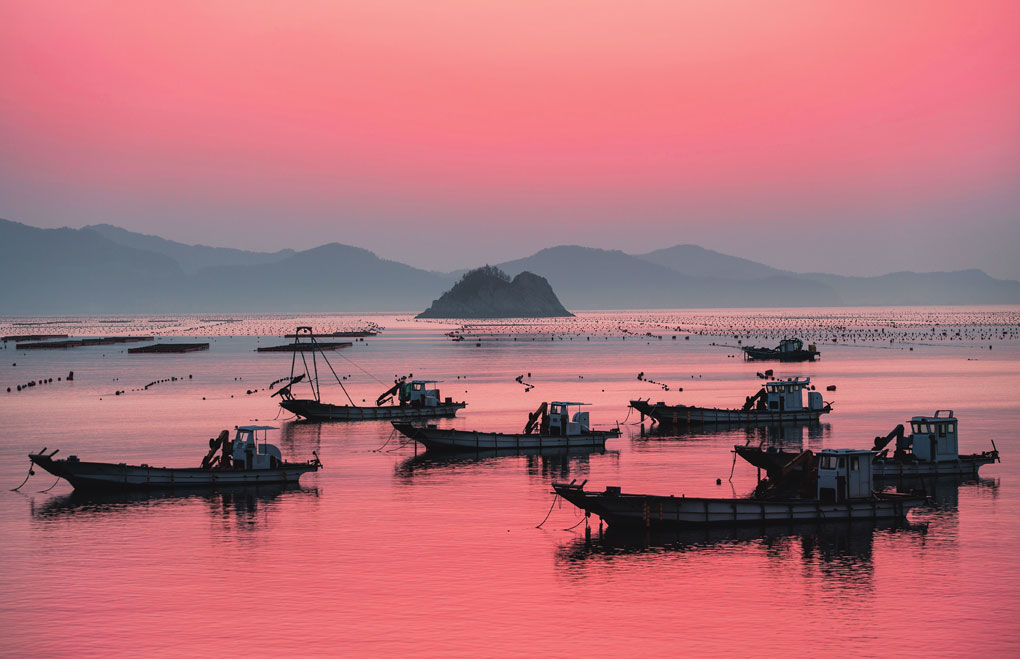
Abalone farming boats float off Yesong-ri, considered the most beautiful spot on Bogil Island. With pebble-covered Mongdol Beach and evergreen forests nearby, this area attracts many tourists.
Daeheung Temple and Mihwang Temple
Development often alters the fortunes of a historical site and the attitude of the local people. Jeon told us that a new restaurant area has appeared at the entry to Daeheung Temple and that the 200-year-old Yuseon Inn had closed down. The inn was where I had laid on the warm ondol floor with my mother and sister asleep beside me after exploring Daeheung Temple, sleep eluding me after hearing all the stifling news from home. My mother had come to visit me, traveling more than 400 km, with my younger sister to guide her on the road.
A place that has perhaps changed for the worse is Mihwang Temple. With just a few halls, the temple had barely managed to maintain itself in the past, but it still was a charming place pervaded by ancient atmosphere. Today, it has tall stone embankments and handsome statues of the Four Heavenly Kings at the entrance, and the compound has been expanded to accommodate visitors for the Temple Stay program. The old narrow path on Mt. Dalma that would have been used only by woodcutters and monks has been repaired and transformed into a hiking trail from Mihwang Temple to Ttangkkeut Maeul (literally “Village at Land’s End”). It has been given the exalted name “Dalma Godo,” meaning “Old Dharma Road.” I was relieved a little to see that the temple’s main hall, Daeungjeon, remained just the same as it had been in the past, with no colorful paintwork on its ancient wooden structure.
I first came to Mihwang Temple as a soldier. My assignment was to gather bush clover to make brooms. Haenam doesn’t suffer through bitingly cold winters or fierce snowstorms; a bush clover broom was perfect for sweeping away the occasional snowfall on my army base.
An elderly monk and his wife sat at the end of the narrow porch in front of the temple dormitory. From that spot, you can see rocky mountain cliffs spread out before you, and if you look down, a cluster of little islands that resemble newborn puppies, yet to open their eyes, burrowing into their mother’s embrace. The couple may have given me a glass of water, or the sun may have been setting red in the far distance beyond the sea – I can’t remember.
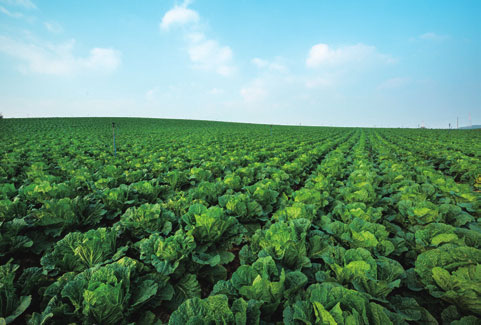
Cabbage fields in Hwawon-myeon
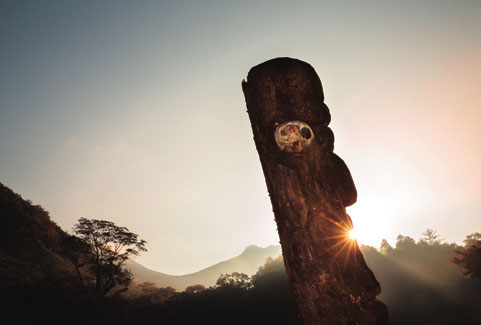
Daeheung Temple on Mt. Duryun
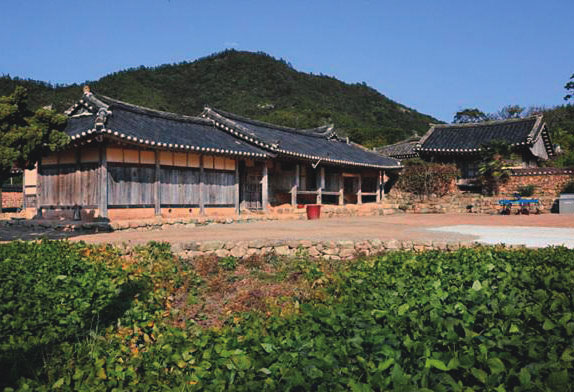
Yun Du-seo’s old house
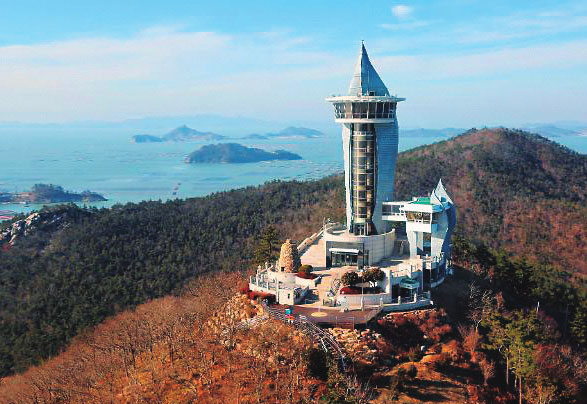
Lion Peak Observatory
At Land’s End
Haenam’s name, literally “South of the Sea,” infers that it’s just a step away from land into a new world. Invested in this place is the power to bring mariners and exiles back from adversity. This image of a location where beginning and end exist together has occasionally brought forth lyrical musings from modest poets, but the poet who stood at the extreme and struggled most fiercely with this paradoxical narrative is Kim Ji-ha (1941- ).
After publishing the poem “Five Bandits” (Ojeok), which adopts a highly original form to satirize those constantly involved with corruption and graft, Kim Ji-ha stood at the forefront whenever critical issues arose during Korea’s democratization process of the 1970s. Exhausted in body and mind by the cycle of escape, arrest, imprisonment, torture and amnesty, in 1984 he brought his family to live in Haenam, hometown of his maternal relatives. His life gradually stabilized, but he was still unable to feel truly comfortable. Around that time, at the end of the land, he saw “things that come from the past and future together, shouting, crying, beating their chests, swallowing their tears, walking with their heads bowed.” What he discovered in that dark, ominous and clammy image was the Aerin – a being that dies and is reborn.
“Standing at the land’s end / standing at the land’s end with nowhere else to go / where there is no return / I become a bird and fly / or a fish and hide / whether the wind, the clouds or a ghost / at the land’s end where there is no other way but to change / I stand alone and call out…” – From “Aerin” (1985)
His mental state badly deteriorating afterwards, Kim had to leave Haenam to receive proper psychological treatment.
In his later years, the philosopher Ludwig Wittgenstein said that in Franz Schubert’s “non-religious and melancholy” melodies he discovered “the point where thinking becomes acute.” The point: “We want to walk: so we need friction. Back to the rough ground!” (From “Philosophical Investigations”) In the 1983 novel of the same name (original German title: “Die Klavierspielerin”), on which the movie “The Piano Teacher” is based, the author cries out that we must overcome the stupidity of using health, which always sides with victors, as a criterion for something important. “Health – how disgusting. Health is the transfiguration of the status quo.” It seems that the people of Vienna, just when their ability to think is about to hit bottom, also discover something new that allows them to overcome the melancholy that comes just before madness. I wish I could show them the rough ground of Haenam.